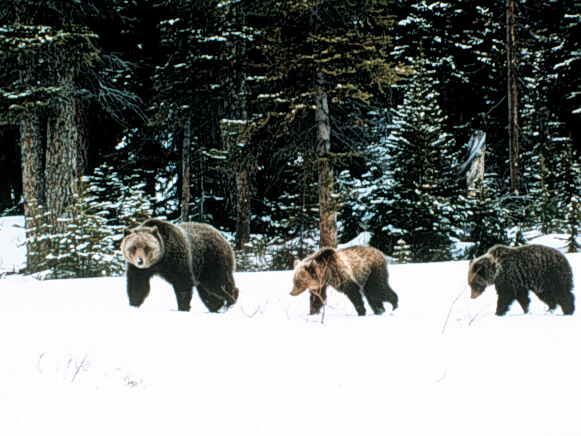
Abstract
(Note: Abstract not available; this is the conclusion). The complex, interactive, and multidimensional factors acting upon grizzly bears in Alberta necessitates an interdisciplinary and multiscalar scientific approach to their population recovery and management. The data and subsequent insight acquired from such an approach will better inform decision makers, and may ultimately contribute towards improving public faith in the scientific processes informing decision making. Importantly, however, to have a societal and political impact it is imperative that scientists broadly communicate their research in a way that non- specialists can understand, while simultaneously establishing the rigorous state- of- the- art science underpinning grizzly bear research. Improving public understanding of research related to the ecology, management, and conservation of the bears may go a long way towards fostering the social tolerance necessary for co-existing with a healthy grizzly bear population in Alberta, which is a lesson learned from the European successes. Great science, and public understanding and acceptance of it, is necessary for large carnivore conservation, especially if societal values and ethics ultimately shape management policy. Given the recent situation in BC, the question arises as to whether population recovery in Alberta will lead to an end of the hunting moratorium in that province? This is a question that we, of course, cannot answer. Certainly, however, we need the aforementioned science to help direct actions that most efficiently and effectively increase the population size, to determine when then population has recovered, and to manage that population post-recovery, before the possibility of a sustainable grizzly bear hunt could even be evaluated. Eventually, if population recovery is successful, a grizzly bear trophy hunt in Alberta will be up to society and government to decide. But we have to get there first, and that requires directed monitoring and applied research.
Read the paper here.
Citation
Coogan, S. C. P., Coops, N. C., Janz, D. M., Cattet, M. R. L., Kearney, S. P., Stenhouse, G. B., & Nielsen, S. E. (2018). Towards grizzly bear population recovery in a modern landscape. Journal of Applied Ecology, 56(1), 93-99. doi:10.1111/1365-2664.13259






